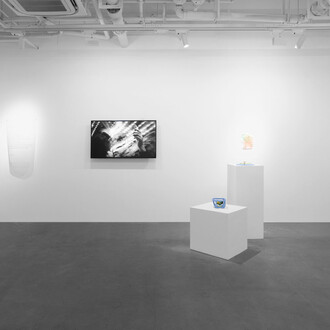Swedish artist duo Lundahl & Seitl present River Biographies – Huangpu River. Co-produced by the West Bund Museum and the Chronus Art Center (CAC), this program is a special commission for the "Cultural Researcher" program. The program was initiated by the West Bund Museum with the special support of Chanel. The work focuses on Shanghai Sound and the local cultural fabric of the city, taking the Huangpu River — Shanghai’s “mother river” — as its point of departure. Through exploring sound as a way of listening to the river, the artists seek to rediscover its multifaceted presence.
For over two decades, Lundahl & Seitl’s research-based practice has revolved around the human body as a medium, exploring its entanglement with landscapes, ecosystems, and technologies of perception. River Biographies is a perennial, evolving art project shaped by rivers and people who live alongside them. It listens, adapts and learns. Each iteration responds to the ecological, emotional, and cultural landscapes of a particular river and its surrounding communities. Huangpu, Indus, Ruhr, Bosphorus.The rivers’ own memory carries personal, geological, chemical, and industrial histories. Buried rivers, lost species, disturbed climates. The rivers in the artwork are part of the earth’s body, silenced by what we can no longer bear: grief, shame, loss, longing, sacredness.
With River biographies – Huangpu river at Westbund, participants are invited to enter dialogue with water—as memory, as witness, as force—and parts of themselves shaped by its flow. This is a relational space where things of the world remain unseen until met within the body.
The workshop unfolds as a poetic topology of bodies, movement, emotions, stones, tears, water and voices, a process where Shanghai meet riverine communities across the world: the Indus — revered yet polluted; the Ruhr — once straightened, now slowly rewilding; the dammed rivers of northern Sweden, where trapped water generates energy displaced elsewhere. Each current carries both harm and renewal, reminding us that what is buried or silenced may also be restored.
Together, these global cycles of water form a score, a choreography of movement and relation; asking how grief can be transformed into care, and how waters, once controlled or abandoned, might be returned to flow.
River biographies takes two interwoven forms:
1. Living archive (installation)
A continuous environment of mist, smell, sound, stones and vibration,
continuously shifting with the tides, echoing within the memory of the rivers of
the world. Songs drift in and out, carried on sub-bass vibrations and
hyper-directional loudspeakers. Here, sound does not diffuse into the room
but travels like a tight beam, landing directly on the listener’s body — as if the
voice originates from with and within them. The tides bring a shift in the mists:
smell particles — the river’s memory made molecular — evoke geological,
chemical, and industrial histories. Songs drift in and out, sculpted into air as
fragile tides.
2. Embodiment sessions (approx. 45 minutes)
Groups of twenty participants surrender their autonomy to the collective expression of rivers. To embody the river is not something one observes – it is something one undergoes. In each session, they are divided into two roles: stones and water. The stones remain still while the water moves among them, simulating the current’s approach, pressure, and convergence. Participants receive wireless headphones and goggles that obscure sight and turn the gaze inward. Smell and touch are the work’s first language – a language that bypasses vision and logic, touches memory, and opens the body to another kind of knowing. Within this sensory environment, participants are guided by voices set into motion through hand-to-hand intra-action.












